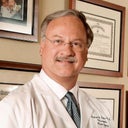I am 1 month post op after rhinoplasty I am worried I have lots of humpy skin or cartilage(not sure what to call it) inside my nostrils is this normal?
Answers (7)
From board-certified doctors and trusted medical professionals
Dr. Inessa Fishman, MD
Facial Plastic Surgeon, Board Certified in Otolaryngology – Head and Neck Surgery
Answer
Dr. Michael Sullivan, MD (retired)
Board Certified Facial Plastic Surgeon
Answer
More Rhinoplasty Questions
See all Rhinoplasty Q&AWE SEND PRETTY
EMAILS
What’s trending? Who’s turning heads? Which TikTok myths need busting? We’ve got you. No fluff, no gatekeeping—just real talk. Get our free, unfiltered newsletter.



